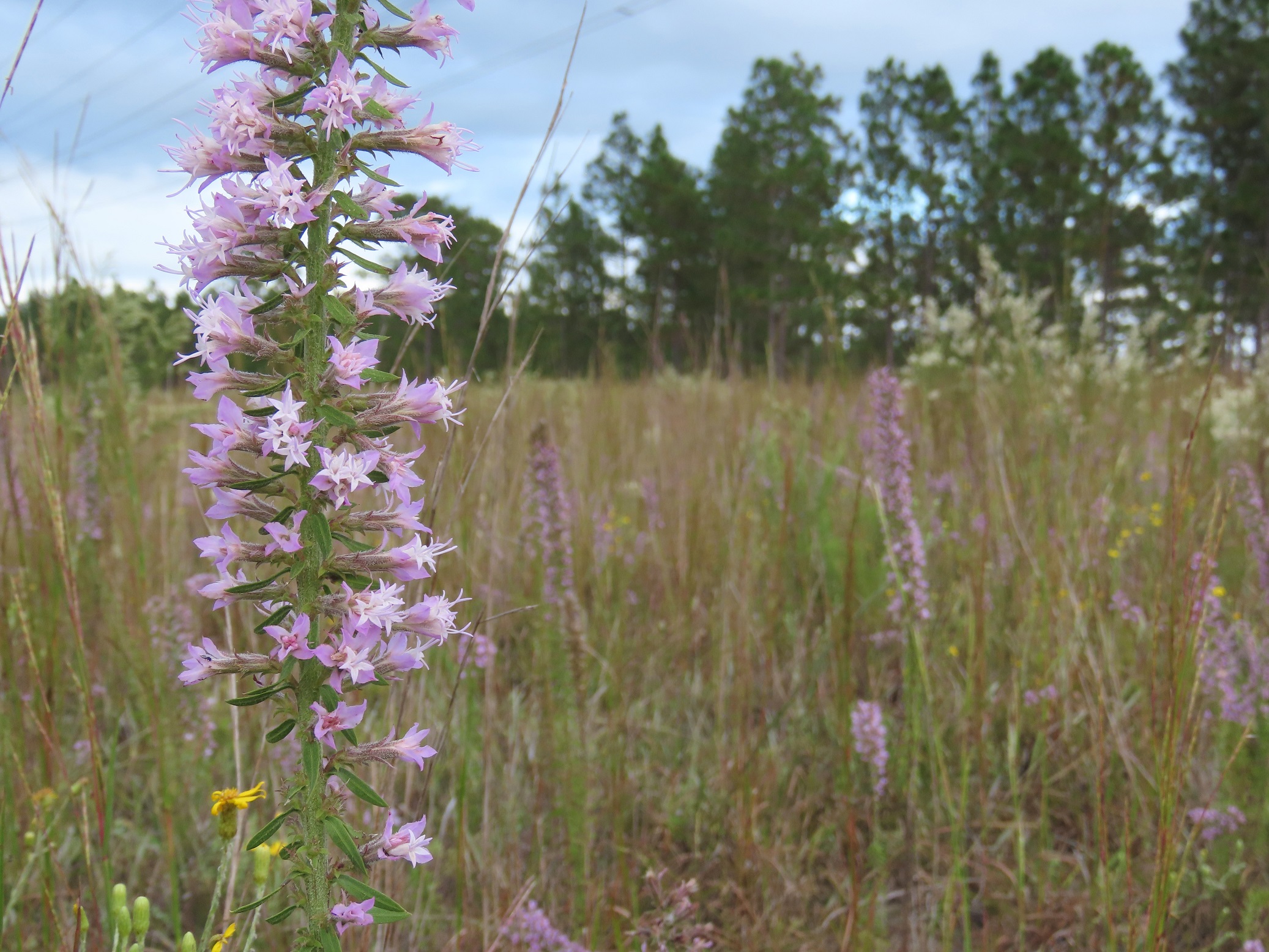
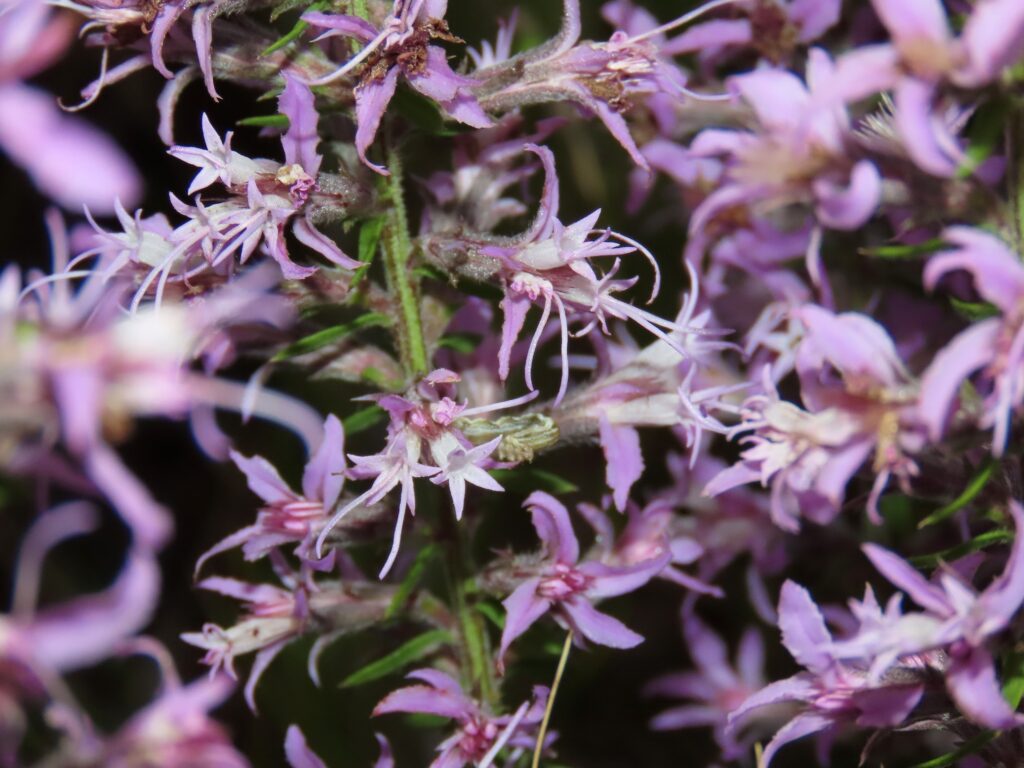
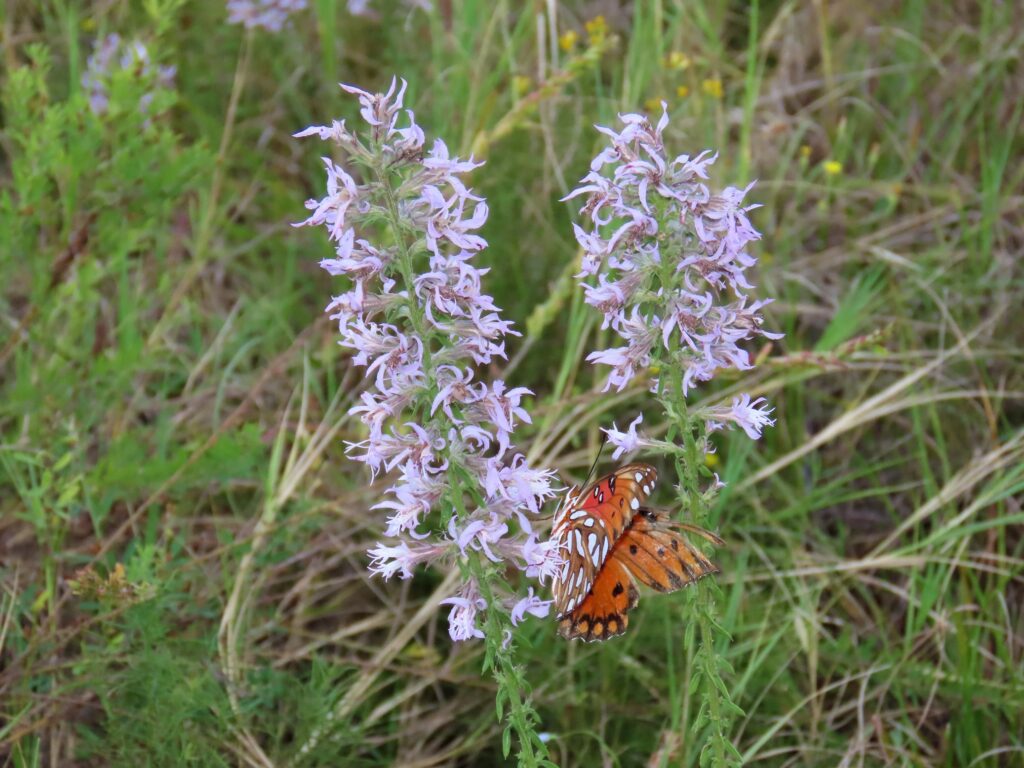
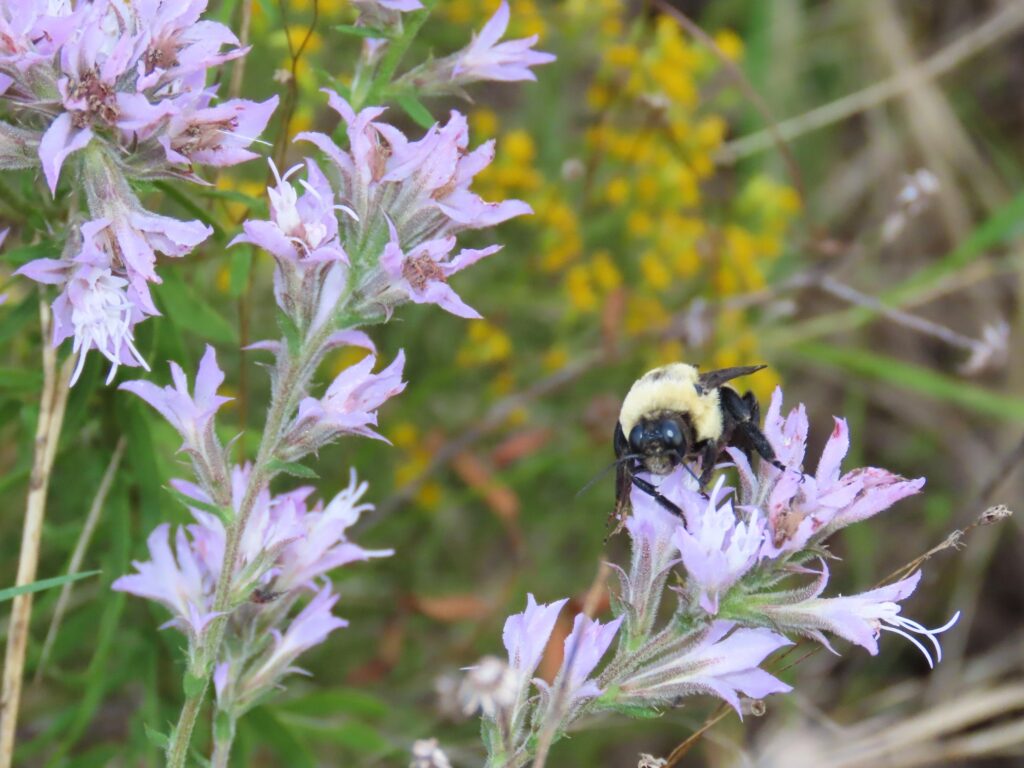
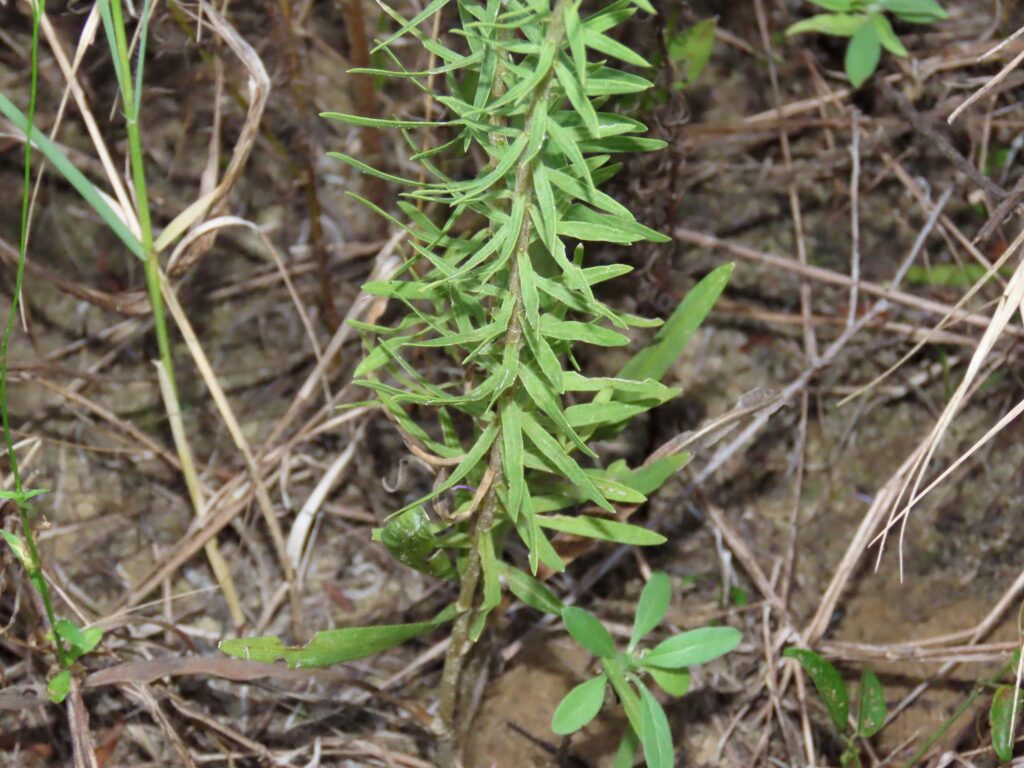
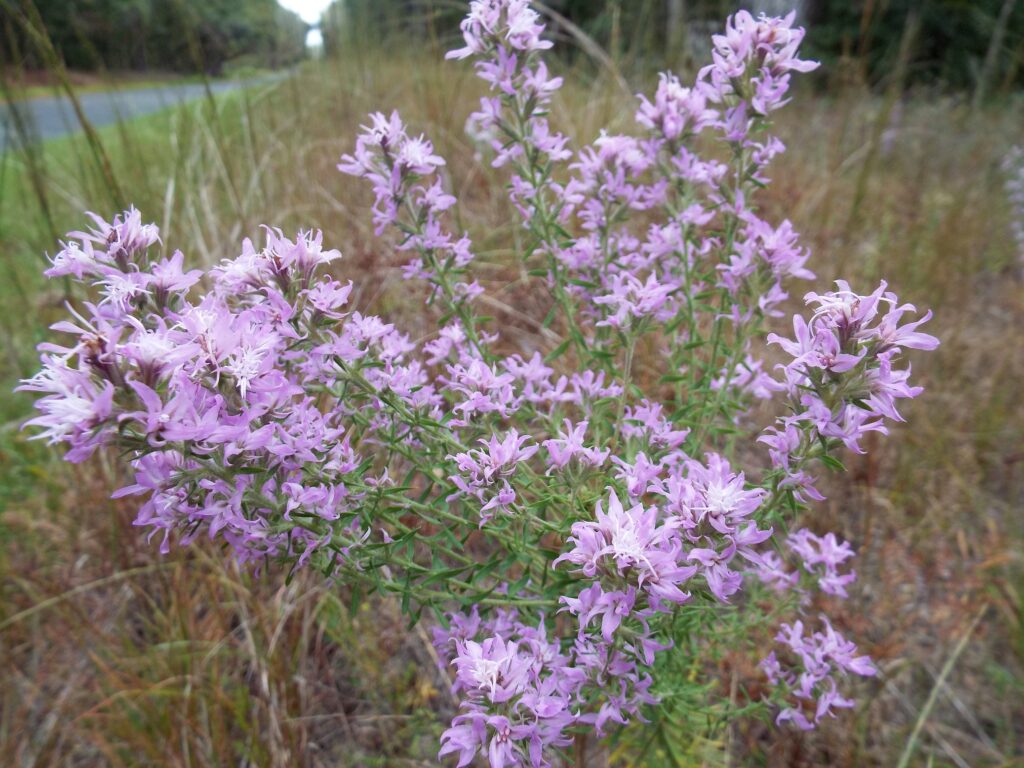
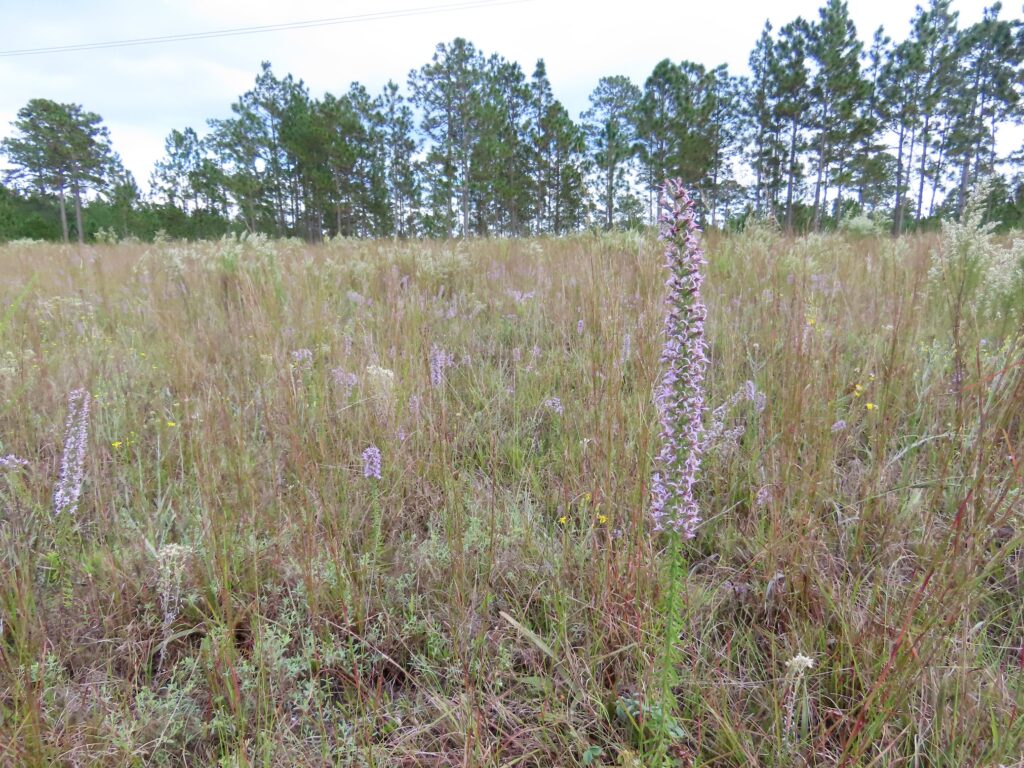
This week for Flora and Fauna Friday we’re appreciating the elegance of Elegant Blazing-Star (Liatris elegans).
Elegant Blazing-Star is found in the coastal plain of the Southeast and much of the South Carolina Lowcountry. It grows in full sun on high and dry sandy soils, including the sand ridges of the Sea Islands and pine savannas of the mainland. Here in the Lowcountry we have nine species of Blazing-Stars, three of those being reasonably common around Edisto: Dense Blazing-Star (L. spicata), Wand Blazing-Star (L. virgata), and Elegant Blazing-Star. The Blazing-Stars can be a difficult genus to tell apart due to their similarities. Thankfully, the elegance of today’s subject blazes like a star and makes it an unmistakable wildflower.
For most of the year, Elegant Blazing-Star is out of sight and out of mind. It’s a perennial bulb plant that retreats to its egg-sized corm in winter and returns in spring to bask in sun as a simple tuft of grass-like leaves. But come September through October, Elegant Blazing-Star blooms to produce a long, brush-like plume reaching an average of two to three foot in height but just two to three inches around. The flowers of Elegant Blazing-Star differ from our other Blazing-Stars in two main ways. Their petals are a pastel pink, bordering on white in some plants, as opposed to the more often hot-pink and magenta blossoms of its cousins. They also bear colorful bracts, special leaves that appear like petals in twisted tongues that flank the fringes of each flower-head, giving them a distinctly shaggy look. These two features lend them a unique color and form from all other Blazing-Stars. This pink and brushy flower stalk of Elegant Blazing-Star is ringed in hundreds of individual flower-heads, one every half-inch or so. Each flower-head is itself a compound flower of about a half-dozen individual flowers. This means each flower stalk could yield a thousand flowers! Those flowers provide sustenance for our native bees and butterflies, who help sustain the entire ecosystem as well as the bounty of local crops and gardens.